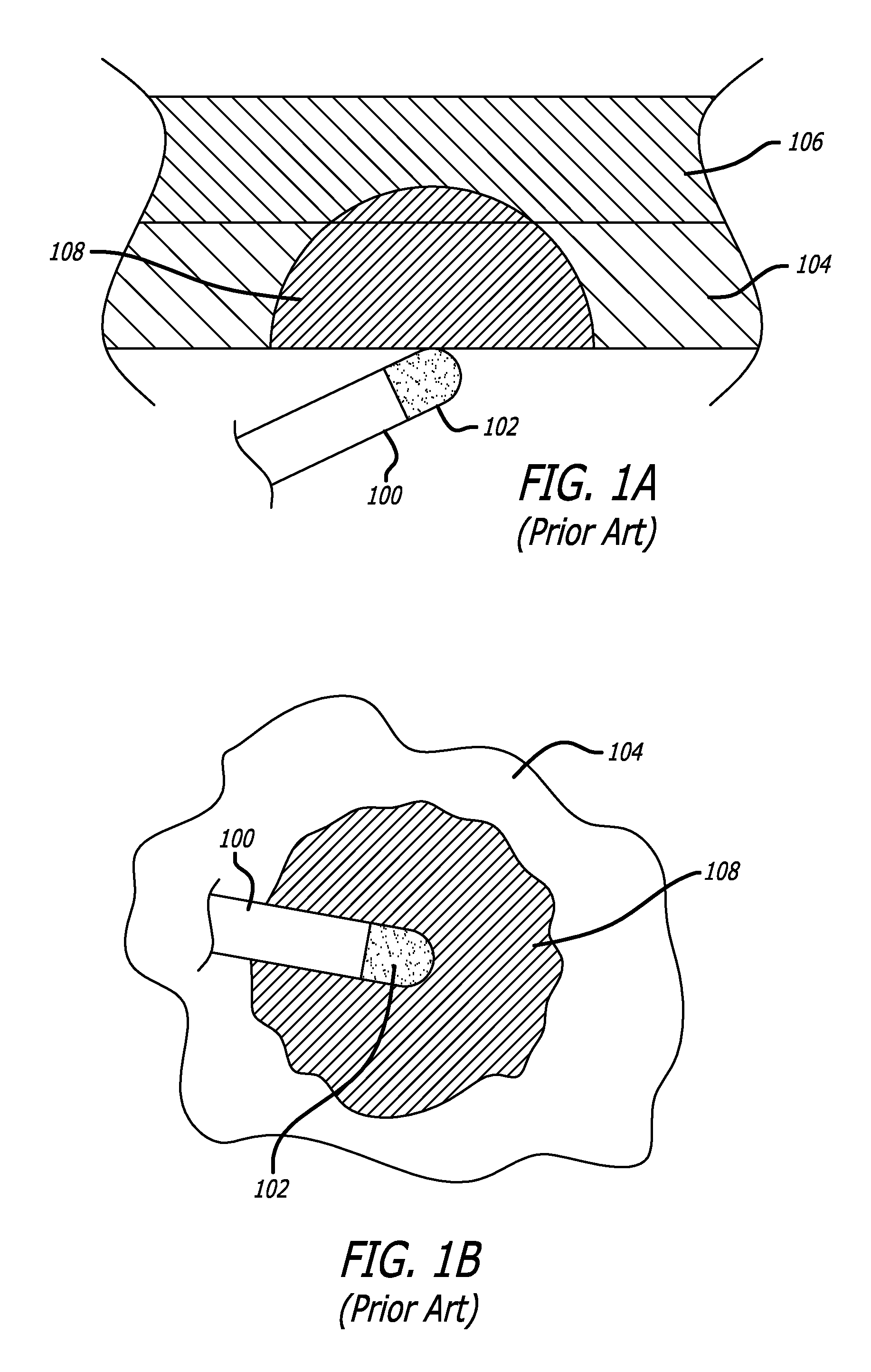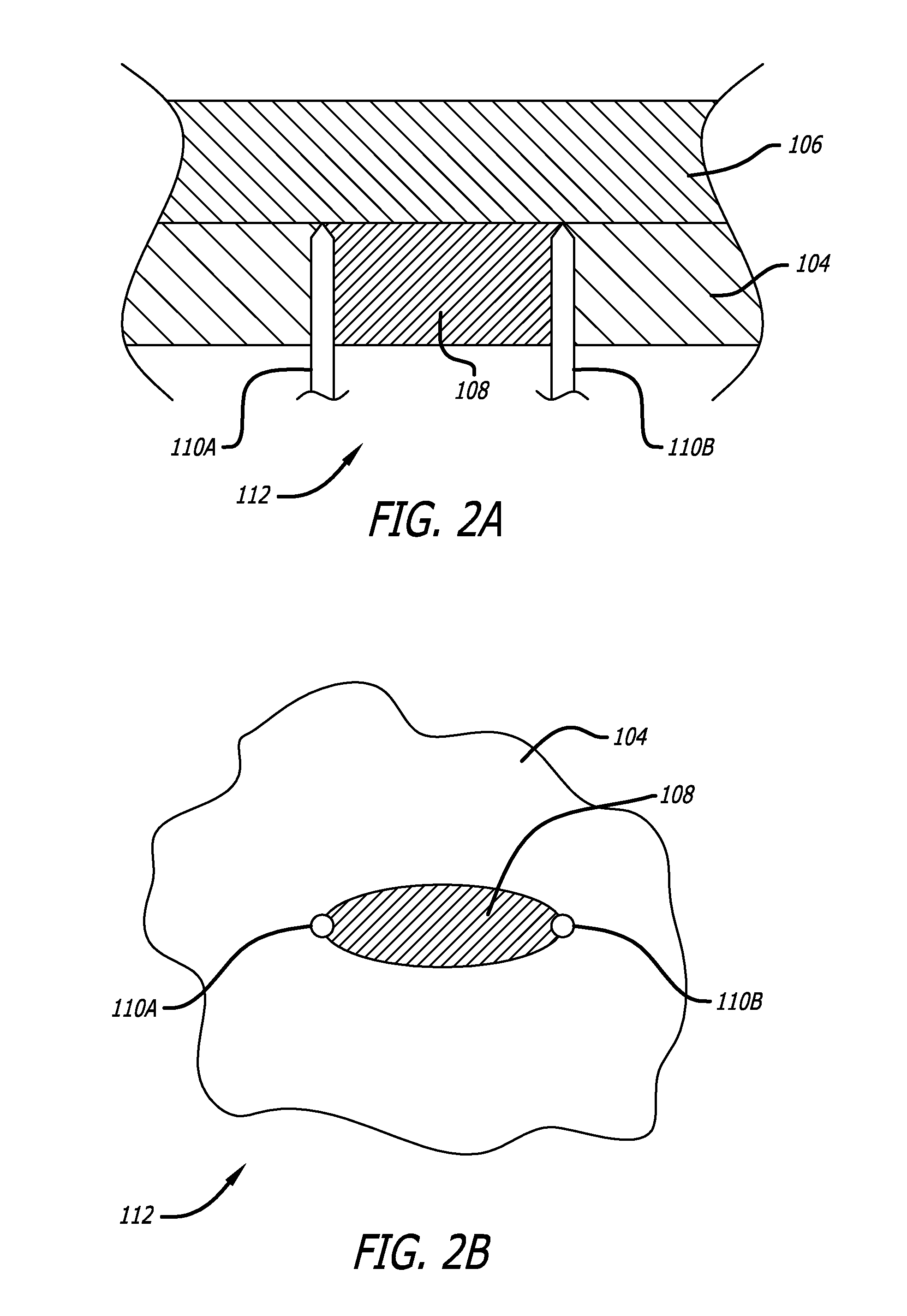Methods and devices for creating electrical block at specific sites in cardiac tissue with targeted tissue ablation
a targeted tissue and electrical block technology, applied in the field of electrophysiology, can solve the problems of difficult positioning of the device accurately, the depth of the ablation may extend beyond the targeted, and the method has become characterized with uncertainty as to whether the appropriate amount of ablation is appropriate, so as to achieve precise ablation device and technique, easy to create linear ablation scars, and achieve targeted ablation damage to tissue.
- Summary
- Abstract
- Description
- Claims
- Application Information
AI Technical Summary
Benefits of technology
Problems solved by technology
Method used
Image
Examples
Embodiment Construction
[0032]As previously described, there are a number of mechanisms used to create electrical block acutely. Some of these mechanisms involve the use of energy delivery such as RF or microwave radiation to ablate a target tissue. In these instances, energy is typically applied to either the endocardial or epicardial surface using mono-polar devices.
[0033]More specifically, the ablation energy is delivered through a small surface area ablation tip and transmitted through the tissue to a large area ground plate in contact with the body at a far removed site. The result is a concentration of the ablative current immediately around the ablation tip that rapidly decreases as the current travels further into the tissue, away from the ablation tip.
[0034]FIGS. 1A and 1B illustrate this concept, depicting a mono-polar ablation device 100 with an ablation tip 102 contacting the tissue wall 104 of tissue 106. In most practices, it is believed that it is necessary for the lines of burns to be fully...
PUM
 Login to View More
Login to View More Abstract
Description
Claims
Application Information
 Login to View More
Login to View More - R&D
- Intellectual Property
- Life Sciences
- Materials
- Tech Scout
- Unparalleled Data Quality
- Higher Quality Content
- 60% Fewer Hallucinations
Browse by: Latest US Patents, China's latest patents, Technical Efficacy Thesaurus, Application Domain, Technology Topic, Popular Technical Reports.
© 2025 PatSnap. All rights reserved.Legal|Privacy policy|Modern Slavery Act Transparency Statement|Sitemap|About US| Contact US: help@patsnap.com



